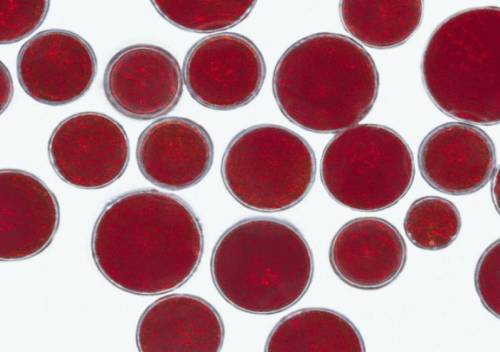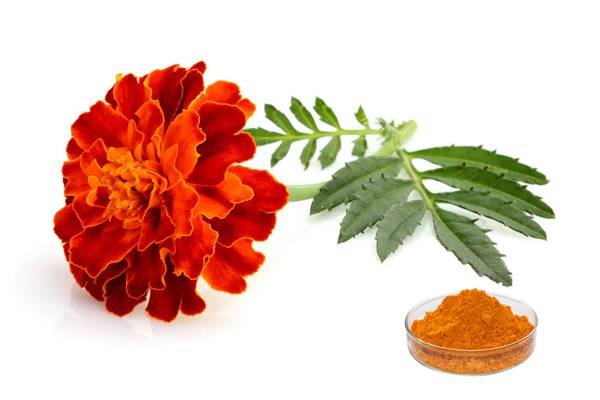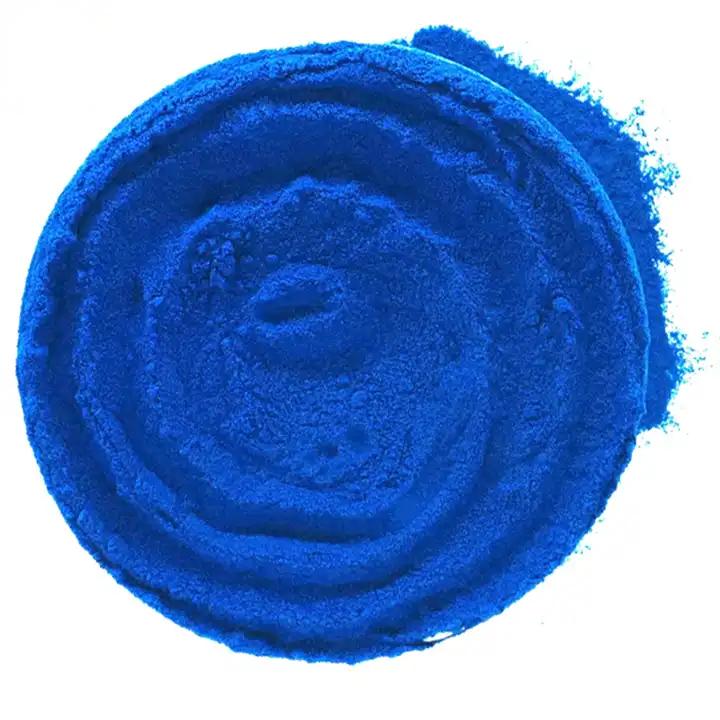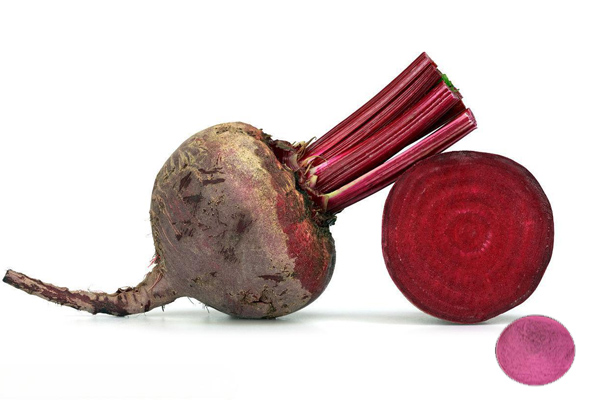Natural Astaxanthin Powder
Source:Haematococcus Pluvialis
Specification:2%,3%,5%
Testing Method:HPLC
Appearance:Red or Dark Red Powder
Pesticide Residue:Comply with (EC) No 396/2005 Standard
- Description
- Data Sheet
- Certificate
-
What is Astaxanthin Powder?
Astaxanthin, also known as astaxanthin, is a non-vitamin A proximate ketocarotenoid. Astaxanthin is a fat-soluble and water-soluble pigment found in marine organisms such as shrimp, crabs, salmon, and algae. Astaxanthin powder can also be produced from algae, bacteria, yeast, etc., in addition to being obtained using biological extraction methods. Astaxanthin in nature comes from algae, bacteria, and phytoplankton. Among them, the accumulation rate of astaxanthin in rainy red algae is significantly higher than in other green algae, in high salinity, nitrogen deficiency, high temperature and light and other specific conditions of rainy red algae in astaxanthin accumulation can be greatly increased, is currently recognized as the production of natural astaxanthin is the best source of biological.
The natural astaxanthin powder provided by Green Spring Technology has a high content of up to 5%, which is much higher than the average standard in the industry, with good stability, high antioxidant activity, excellent coloring, and good bio-absorption. In addition, from raw materials to products, Green Spring's production is fully controllable and traceable, and the testing of various pollutants meets global standards.
Green Spring is a leading supplier of plant extracts in China. It was established in 2000 and is dedicated to providing customers with natural, safe, and organic plant extracts. All of the products we offer are manufactured to the highest international industry standards, complying with EU EC396, EU 2023/915, and the highest solvent residue standards. We have a systematic quality management system and organize our production in strict accordance with ISO, HACCP, and other quality standards. We have passed Halal, Kosher, COSMOS, BRC, IFS, FDA, ISO, and many other certifications.
Specification:
Product Name
Natural Astaxanthin Powder
CAS No.
472-61-7
Source
Haematococcus Pluvialis
Assay
2%,3%,5%
Testing Method
HPLC
Appearance
Red or Dark Red Powder
Pesticide Residue
Comply with (EC) No 396/2005 Standard
Regulation:
It conforms to EU regulations.
Looking for a Quotation?Benefits:
Antioxidant
Astaxanthin can effectively scavenge UV-induced free radicals and play an antioxidant role in reducing wrinkles and resisting skin photoaging. Astaxanthin's antioxidant properties are mainly due to the molecule having a very long conjugated double bond chain, at the same time in the conjugated double bond chain at the end of the unsaturated ketone group and hydroxyl and constitute the α-hydroxy ketone, these structures have a more active electronic effect, can provide electrons to the free radicals or to attract free radicals of the unpaired electrons to achieve scavenging of free radicals to achieve the effect of antioxidant.
Enhancement of Immunity
Astaxanthin can significantly affect the immune function of animals, in the presence of antigens, can significantly promote the production of antibodies in spleen cells, enhance the role of T-cells, and stimulate the production of immunoglobulin in the body. Animal experiments show that astaxanthin has a strong activity of inducing cell division, and has an important immunomodulatory effect.
Relieve Exercise Fatigue
Studies have shown that astaxanthin can be used as an antioxidant to inhibit the oxidative damage caused by free radicals. It can strengthen aerobic metabolism, increase muscle strength and muscle tolerance, quickly relieve exercise fatigue, and reduce delayed onset muscle pain after intense exercise.
Protection of Nerve Cells
Studies have shown that astaxanthin can play a wide range of antioxidant, anti-inflammatory and anti-apoptotic effects in vivo and in vitro to protect nerve cells. Astaxanthin can restore anti-peroxidase activity, inhibit the production of reactive oxygen species and the release of inflammatory factors, inhibit MPP+-induced oxidative stress and inflammatory response to PC12 cell damage; astaxanthin can also regulate the ratio of Bcl-2/Bax, down-regulate the expression of α-synuclein, inhibit MPP+-induced damage to SH-SY5Y cells; astaxanthin can be used to protect neuronal cells by inhibiting the reduction of mitochondrial By inhibiting the decrease of mitochondrial membrane potential and the activation of p38MAPK and caspase-3/caspase-9, astaxanthin can inhibit the damage of mitochondrial function by 6-OH-DA in SH-SY5Y cells, and protect neurons through mitochondrial anti-apoptosis mechanism.
UV Protection
UV radiation is an important cause of epidermal photoaging and skin cancer. Studies have shown that astaxanthin has a special effect on glutamine transaminase and is able to deplete putrescine when the skin is exposed to light. Astaxanthin's strong antioxidant properties make it a potential photoprotectant, effectively scavenging free radicals that cause skin aging, protecting cell membranes and mitochondrial membranes from oxidative damage, and stopping skin photoaging.
Applications:
In the Feed Field
Astaxanthin powder can be used as a feed additive for fish and crustaceans such as shrimps and crabs, as well as poultry. As a coloring agent for aquaculture animals, astaxanthin can give aquatic animals a bright color and make them more ornamental. Adding astaxanthin to poultry feed can increase the pigment content of egg yolks; it can also improve the egg-laying rate of hens and promote the health of laying hens. Astaxanthin in the prevention and treatment of fish, shrimp, crab, and poultry disease has the same function as for human beings, can improve immunity, survival rate, normal growth, and healthy breeding, improve the survival rate and reproduction rate has an important role.
In the Food Field:
Astaxanthin as a food additive can be used for food colouring, preservation and nutrition. Astaxanthin is fat-soluble, with a brilliant red colour and strong antioxidant properties. For food, especially food containing more lipids, it has a colouring effect and can play a role in preserving freshness. In Japan, astaxanthin-containing red oil for vegetables, seaweeds and fruits in the marinade has applied for a patent, for beverages, noodles, seasonings, and colouring are also patent reports.
In Cosmetics:
As a new type of cosmetic raw material, astaxanthin is widely used in creams, emulsions, lip balms, skin care products, and other types of cosmetics with its excellent properties. Especially in the field of advanced cosmetics, natural astaxanthin, with its unique molecular structure, can efficiently burst free radicals caused by ultraviolet rays through its antioxidant effect, preventing skin photoaging, reducing UVA and UVB damage to the skin, preventing the production of skin cancer, slowing down the aging of the cells, reducing the wrinkles of the skin, reducing the deposition of melanin, reducing the production of freckles, and can maintain moisture, so that the skin has more elasticity, tension and moisturize the skin. In Japan, there is a patent for the production of cosmetics using astaxanthin's antiphotosensitising effect.
-
Download
Natural Astaxanthin Powder COA


 English
English French
French Spanish
Spanish Russian
Russian Korean
Korean Japanese
Japanese











